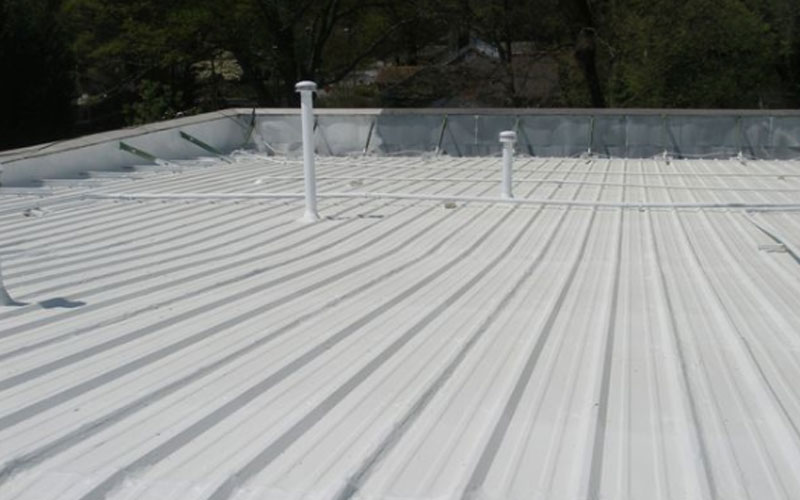Roof coatings help protect the structure they’re applied to but are often stretched by seasonal temperatures and other abuse. Once the coating is applied, the layer covers the roof as one membrane able to distribute that stress against it across the rest of the coating. This layer is expected to expand and stretch with temperature changes and physical impact while returning to a consistent shape. This all keeps the roof the coating lasting longer and the roof in great shape.
A roof coating that lacks elongation or is applied too thin may need to be replaced sooner than it should. It’s not enough for a coating to look nice when first applied, it should provide protection for the roof as it’s used without showing signs of damage. No one wants to see a roof worn down so quickly by small scratches that could otherwise have been prevented.
What is elongation?
Elongation is how well a material can stretch before breaking. In roof coatings, elongation demonstrates how much stress the material is able to handle and how well it passes that pressure on to the rest of the coating. More elastic coatings can better resist permanent damage like scratches, cracks, and tears while the structure is unharmed.
What is tensile strength?
Tensile strength measures how much force is needed to break a coating. While elongation stretches when the coating is under pressure, tensile holds it together up to the point it snaps and pulls it back to its original shape. Both are needed to maintain roof quality.
However, they tend to have an inverse relationship. As a substance becomes more elastic it’s tensile goes down and vice versa. Some situations may require more tensile while giving up elongation, although generally roof coatings should expect to have both these properties in high amounts to better protect the roof and the coating applied to it.
How does the roof coating’s elongation affect the roof?
As the coating protects the roof from temperature changes and impact, it needs to handle those effects without becoming too damaged itself. While the roof itself isn’t stretched too drastically, the coating helps relieve that stress across a more flexible area and minimize the potential damage. A coating already stretched too far will break down in extreme heat opening up cracks, both unattractive to look at and harmful to the rest of the roof. It’s important the coating provides solid protection and returns to a stable shape as it continues to protect the structure.
What level of elongation is required for a roof coating?
Elongation can vary between coatings. Most coatings range from 300 to 800 percent, relative to a sample’s starting length and how far it may be stretched. While a more flexible surface is very useful for resisting the stress that may be put on it, tensile strength becomes important to resist that same pressure. A coating that’s very elastic will lack tensile strength, allowing it to stretch with extreme changes but just as easily become warped from those changes. It’s also important to factor in that elongation tends to go down as the coating ages, make sure to consider how the elongation will change over years of use as well as it’s initial properties.
How do I choose a roof coating with the right degree of elongation?
A coating that is strong in many different ways has the best potential for protecting it’s roof for many years. Both elongation and tensile are required for a strong coat, as well as it’s resistance to moisture and tearing. The more ways the roof coating can resist damage, the longer it can be expected to last and maintain its other properties.

